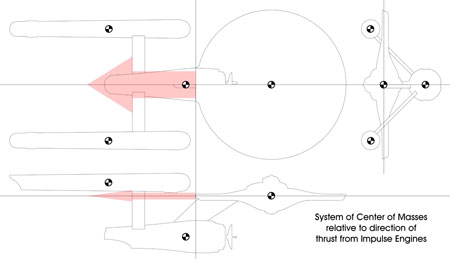Actually I have been outlining non-turbolift movement throughout the ship, and someone (who doesn't visit the bridge) can move around quite freely without ever using a turbolift.
When I was attending classes at UCSD and again while at the U of M, I never used the elevators in the buildings of the math departments... I always used the stairs. And as I recall, both buildings were about six stories tall. Because I didn't use elevators for those years, I've attempted to limit their necessity on the Enterprise too.
There are three primary ways to move from deck to deck without elevators.
- Large Ladder Ways: LLWs are the three person ladders that pop up frequently throughout the series.
- Single Person Ladder: SPLs which are often seen in small alcoves off of corridors. These are more often used for access to inner parts of the deck rather than moving from deck to deck.
- Stair Wells: not all that different from what is common in most buildings today.
Stair Wells are rarely seen because they are primarily used for moving between decks 5 and 6 in ring 4 (which has no turbolift options). A majority of the compartments have at least two
LLWs within them (in case the compartment is sealed off from the rest of the ship), and when these link two different compartments, there is about a 6 inch gap in the ladder for emergency doors to close.
While you can get from one deck to another with
SPLs, their main purpose is to provide access to the spaces between the rooms and the corridors. In the plans you'll find that there is often about a 3 foot difference between the wall of a room and the wall of the corridor. I've assumed that this space is where most of the infrastructure for the ship can be found. And while there is wall access to some of it, the best way to access most of it is to crawl inside by using one of these
SPLs.
I have made sure that
LLWs connect all deck levels from deck 2 down to deck 19, so the only area of the ship which requires a turbolift is the bridge. For the bridge I have two specially designed (and rarely used) turbolifts which are stationed at special stops on deck 2 and 8. Most turbolifts are only slightly larger on the outside than their insides, mainly because the network is what powers them. These two special turbolifts are larger (taller) because they are self powered. Because of there size, they can't leave the main vertical shaft of the primary hull, and only four turbolift stations are able to handle them... deck 1 (the bridge), deck 2, deck 5 (near Sickbay) and deck 8 (near Auxiliary Control). They only become active if the turbolift network is shutdown because they are independent of the network and they also wouldn't follow the traffic rules that the other turbolifts do to avoid jams.
Moving through the dorsal should actually be pretty easy. I assume that the
LLWs aren't at 1 g... more like one half. So if you weighed only half your weight, you could move from the lowest part of the ship to almost the highest very quickly without braking a sweat. The only issue would be that the dorsal is divided up into four compartments... and a pressure loss in any one might block off access between the two hulls. Because of this I've been considering making the
LLWs independent of the compartments in the dorsal (which means I would need to add a secondary access between decks in each compartment... most likely using
SPLs or the Jefferies Tube).
To get an idea of how I envision the turbolift and
LLWs working their way through the dorsal, you can view
this (very old now) diagram of the dorsal.





 ).
).